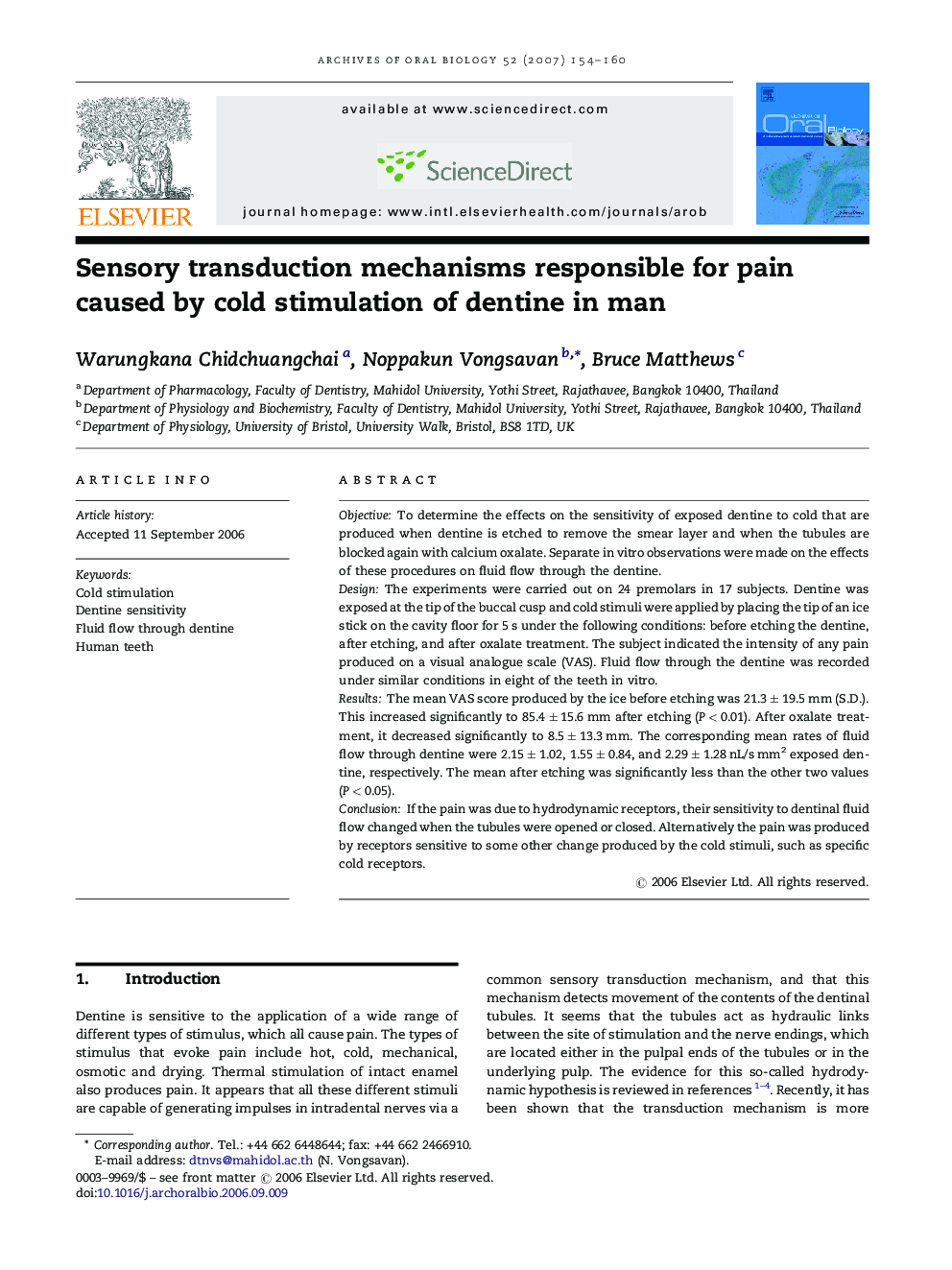| Article ID | Journal | Published Year | Pages | File Type |
|---|---|---|---|---|
| 3121726 | Archives of Oral Biology | 2007 | 7 Pages |
ObjectiveTo determine the effects on the sensitivity of exposed dentine to cold that are produced when dentine is etched to remove the smear layer and when the tubules are blocked again with calcium oxalate. Separate in vitro observations were made on the effects of these procedures on fluid flow through the dentine.DesignThe experiments were carried out on 24 premolars in 17 subjects. Dentine was exposed at the tip of the buccal cusp and cold stimuli were applied by placing the tip of an ice stick on the cavity floor for 5 s under the following conditions: before etching the dentine, after etching, and after oxalate treatment. The subject indicated the intensity of any pain produced on a visual analogue scale (VAS). Fluid flow through the dentine was recorded under similar conditions in eight of the teeth in vitro.ResultsThe mean VAS score produced by the ice before etching was 21.3 ± 19.5 mm (S.D.). This increased significantly to 85.4 ± 15.6 mm after etching (P < 0.01). After oxalate treatment, it decreased significantly to 8.5 ± 13.3 mm. The corresponding mean rates of fluid flow through dentine were 2.15 ± 1.02, 1.55 ± 0.84, and 2.29 ± 1.28 nL/s mm2 exposed dentine, respectively. The mean after etching was significantly less than the other two values (P < 0.05).ConclusionIf the pain was due to hydrodynamic receptors, their sensitivity to dentinal fluid flow changed when the tubules were opened or closed. Alternatively the pain was produced by receptors sensitive to some other change produced by the cold stimuli, such as specific cold receptors.
